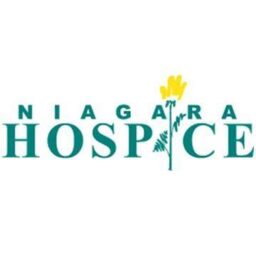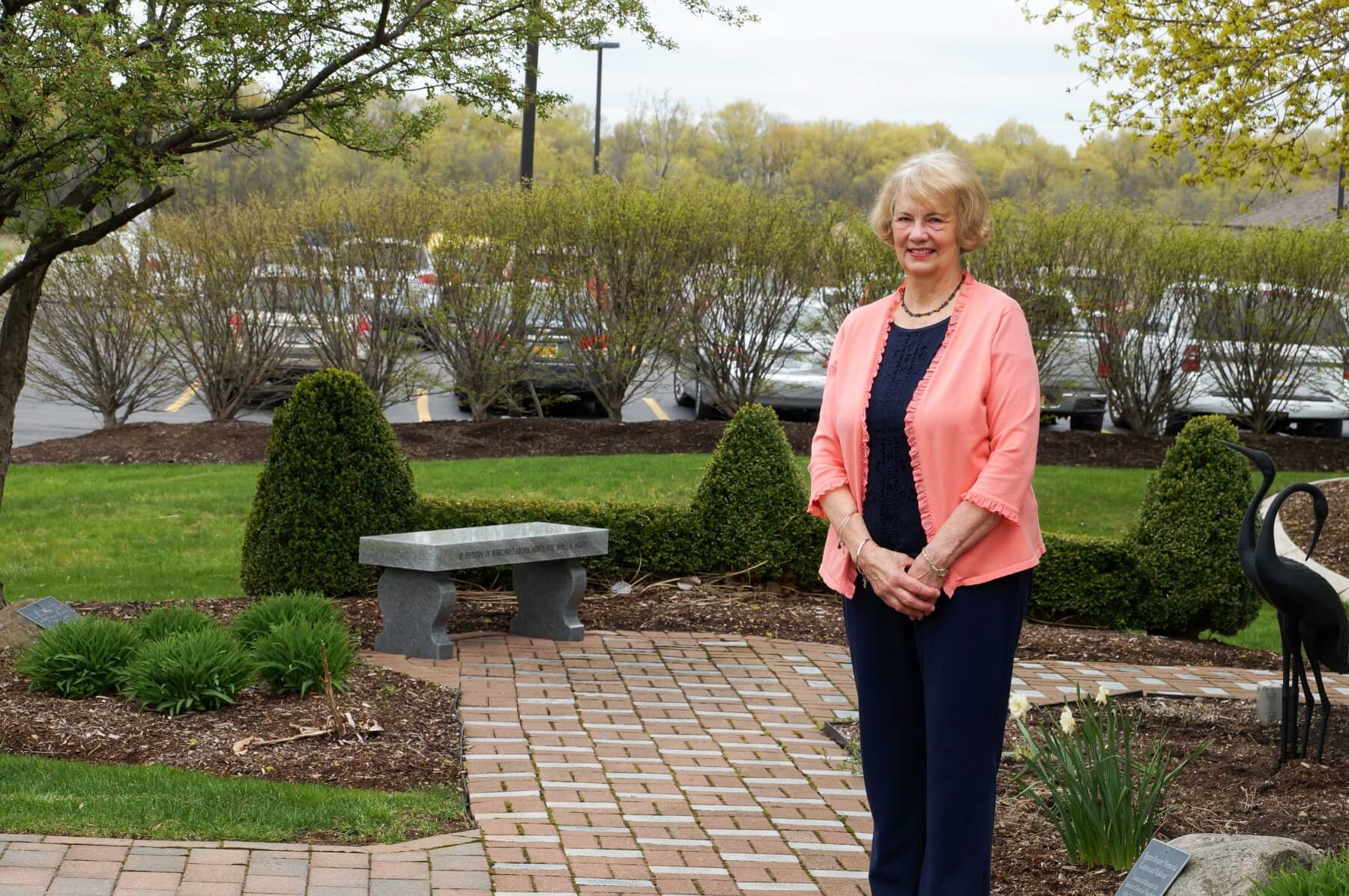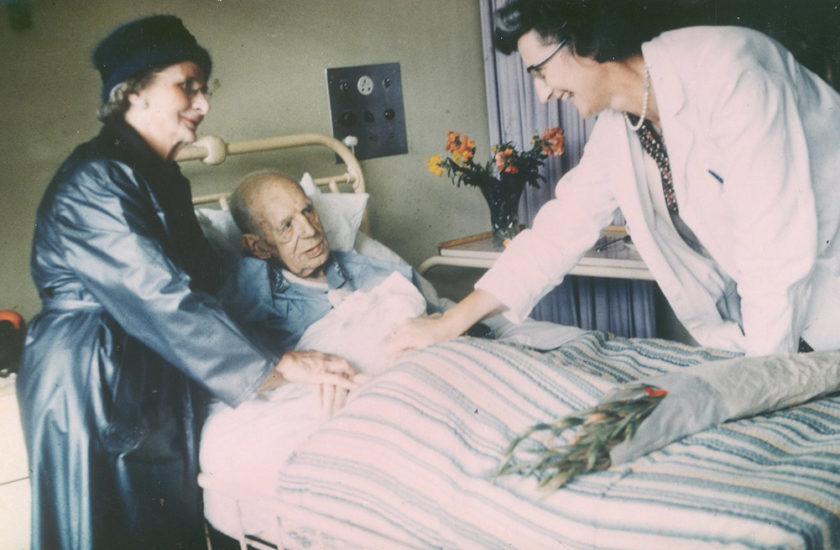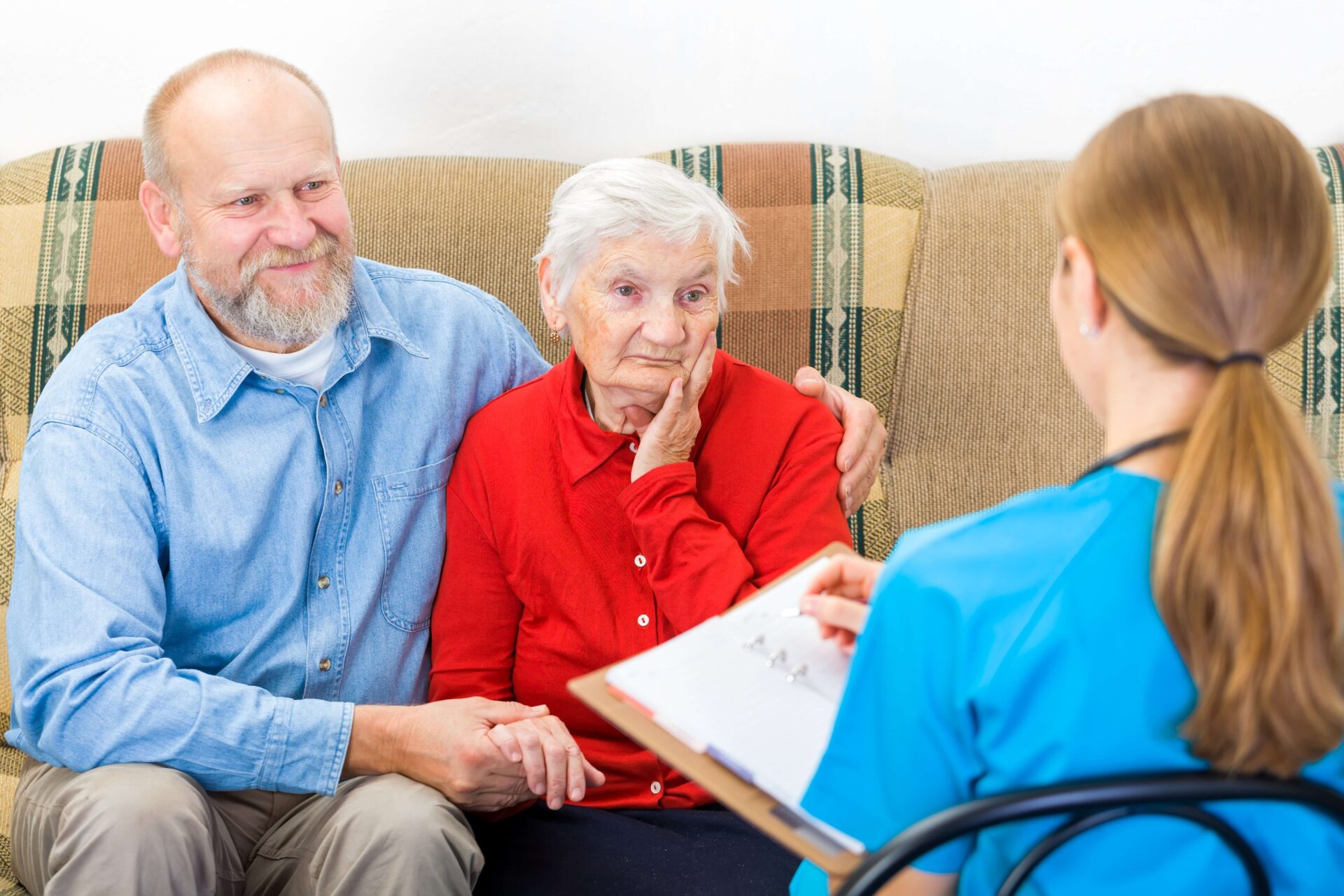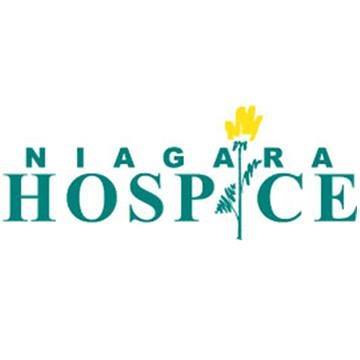You Can Grieve in Your Own Way
Don’t “Should” on yourself
By Kimberly Grande, Niagara Hospice Bereavement Counselor
How often have we, who are parents, stated, “This child didn’t come with a training manual?” At times, grief can feel like that, too – “I wasn’t given a training manual for handling this.” And yet, society seeks to impose on us a training manual, of sorts, with comments such as: “You should do this,” “Have you thought about this?” “You should never do that,” and “You really should try this.”
“Should” – now there is a word that the grieving person would do well to avoid. No one knows or understands your grief experience. Just like raising each child is a wholly different encounter from another, so too is the grief experience a very individualized one. It is indeed very individualized, such that the grief you experience for one loss may be completely unique to the grief you experience for another loss.
If you are experiencing the loss of a loved one, please know that there are no “shoulds” in your life. There is only “am.” I am tired, for now. I am having a good day, for now. I am remembering her and I am crying tears of sadness. I am thinking about him, and I am weeping tears of gratitude. I am looking at pictures, and I am laughing. I am angry! I am not ready to go to a party. I am folding her clothes and giving them away. I am waiting to go through her closet. I am keeping his room exactly the same.
I am …. grieving and mourning in my own way, at my own pace, without guilt or apology.
My hope and prayer is that you allow yourself the time, the space and the permission to mourn and grieve according to your timeframe, your tradition and culture, and your very own inclinations.
Caregiver Fatigue and How Hospice Can Help
By Jane James, NP, Director of Admissions at Niagara Hospice
The American Association of Retired Persons (AARP) estimates that nearly 40 million Americans are caregivers for an adult with a disability or illness. Providing care to an individual in the home can include assisting daily living activities, including grocery shopping, dressing, transferring, toileting, eating and medication administration.
People who care for loved ones at home are at risk for developing significant amounts of emotional, financial and physical stress. Recent studies have demonstrated that caregivers are at an increased risk for experiencing a heart attack and even death.
Caregiver fatigue or burnout can occur when the person providing care experiences emotional and physical stress that ultimately is caused by not getting adequate help. Signs that a person may be experiencing caregiver fatigue are feelings of irritability and depression. The caregiver may be experiencing more illnesses, changes in appetite and disruptive sleep patterns. The caregiver may withdraw from friends, family and even activities that they once enjoyed. In the long run, the care that the patient receives can deteriorate.
If you think that you or someone you know may be suffering from caregiver fatigue, it could be time to call Niagara Hospice for an evaluation and discussion about options to assist in the caregiving plan. When a patient is in hospice care, respite is a benefit to the patient and their family and completely covered under Medicare. Respite care can be offered to the patient to provide relief to the family or caregiver. A patient can come to Niagara Hospice House in Lockport to receive excellent care for a period of up to five days and then be transported back home.
Studies also show when a caregiver has access to a well-coordinated interdisciplinary team, he or she benefits from a positive impact that leads to less anxiety, depression and perceived burden. Patients under the care of hospice services are managed by a highly skilled team that features social workers, nurses and volunteers who are trained in monitoring for signs of caregiver stress and strain. Having hospice as a support system can assist the caregiver and provide relief when needed.
Another option for hospice patients to have access to is continuous home care. This special level of home care can be offered to hospice patients when the primary caregiver will require a lot of teaching about how to provide care. Nurses are available for extended lengths of time in the patient’s home. During this time, the nurse instructs the family or caregiver about how to effectively care for the patient and important signs and symptoms to watch for on a regular basis. Educating caregivers and equipping them with the tools necessary to be a successful caregiver will also prevent caregiver fatigue from occurring. Other resources available to caregivers can be found by contacting the Office of the Aging or the Alzheimer’s Association.
From Kitchen Table Conversation to Caring for 30,000 Families
By Anna Grande, Communications & Marketing Intern
The year is 1980. Patricia Evans just watched her neighbor and his family struggle with the aftermath of cancer. The family had little support, and they were left heartbroken. This was when Patricia started to work on the foundations for hospice care for patients and families in Niagara County.
After listening for months to Patricia talk about how essential hospice is, her friends suggested she take action to help make it become a reality. Two of her friends were attending an information meeting in North Tonawanda and they wanted Pat to join them. This first meeting, with 35 people in attendance, kick-started the Niagara Hospice we know today.
Only 35 people know exactly what went on in that meeting, but 40 years later, thousands of Niagara County families have seen the results. While sitting in this meeting, Patricia realized how big this organization could become. “That night, I knew not only would I be involved, but I would have a lead role,” she recalled. Patricia recognized that hospice was something she believed in so strongly, that she would do all she could to make sure this idea became a reality for all Niagara County families.
That first meeting led to the start of an ad hoc committee. Patricia was immediately asked to be the chair. From the inception of Niagara Hospice, she did whatever she could to make a big change. This ad hoc committee was made up of individuals who did not have much money or power, but they had a strong belief in hospice for the people of Niagara County. From those early planning days to today, their collective passion has led to nearly 30,000 Niagara County families receiving specialized care and personalized support and guidance throughout the challenges of a terminal illness.
“Despite all the passion the committee had, there was a challenge in conveying the meaning and importance of hospice care,” said Evans. “If someone had not personally experienced a terminal illness with a loved one, they were less understanding of why hospice was needed in Niagara County.”
This led the committee to realize the first step was educating the public about what hospice care provided and why it was so essential Niagara County have access to these services. Working with Buffalo Hospice, they began having information sessions to educate the communities around Niagara County about the future of hospice care they were trying to build.
By 1982, Niagara Hospice was incorporated under the title of Niagara Hospice Education Association Inc. At the start, it was not a health care organization, so education was included in the title to avoid confusion. They still had much more work to do and significant funds to raise to create an organization that could deliver comprehensive end-of-life care to Niagara County residents. There still would be six years until Niagara Hospice was able to admit its first patient.
In the meantime, the organization worked on creating a Certificate of Need for the New York State Department of Health. Pat Evans, along with the other members, worked on a proposal to convince the government that Niagara Hospice was needed to care for so many families in Niagara County.
By 1988, Niagara Hospice Inc. became the official name and a clinical staff was in place to deliver care to families. Since that first patient, 28,000 families have received support as they navigate the difficult times of late-stage diseases.
Patricia was the first president of Niagara Hospice, and to this day, she remains a member of the Board of Directors. While working to launch Niagara Hospice, she traveled to Great Britain in the ’80 to spend time at St. Christopher’s Hospice, working with Dame Cicely Saunders, credited with developing the modern hospice philosophy. She learned more about the approach of hospice care services and how Dame Saunders and St. Christopher’s end-of-life services operated and impacted their patients’ comfort and quality of life.
After having two sons, Patricia attended Niagara County Community College part-time to earn a degree in human services. There she fell in love with education. While attending graduate school at the University of Buffalo, she was first exposed to the hospice principles, which ultimately kick-started the entire hospice movement for Niagara County.
Following graduation, Patricia learned more about hospice and how to provide the highest quality of care for patients and their families and caregivers. In addition to being the co-founder of Niagara Hospice, she also worked to develop the human services program that NCCC still offers, which led to her position as a professor there until 2018.
Looking back on her involvement at Niagara Hospice, Patricia said that “the quality of care never wavered throughout the years.” The organization started with some people who wanted more support for families facing a terminal illness gathering around kitchen tables and generating ideas about to how to make a change in the availability of comprehensive end-of-life care. After its small group beginnings and Patricia’s vision and commitment, every employee, volunteer and donor has made a lasting impact on Niagara Hospice and helped elevate the comfort, dignity and quality of life for Niagara County residents.
Tracing the History of Hospice Care from the Middle Ages to Niagara County
By Anna Grande, Communications & Marketing Intern
When exploring the origins of hospice care, one might come up with several different answers. There is evidence of “hospice” care dating back to the 11th century, if not even earlier. This type of comfort care was present during the Crusades, when all along the routes to and from Jerusalem, there were places where injured, tired or dying men could spend time and be cared for.
During the Middle Ages, “hospices” developed as a part of the Monastic Reform and as places to house the sick and dying. More evidence of hospice care can be found in the 17th century through the work of St. Vincent de Paul and St. Louise de Marillac and the Daughters of Charity and the Congregation of the Mission.
In the late 1800s and early 1900s, there was a need for comfort for those who were “incurable,” and the movement for hospice care emerged in London, Australia and New York City. While tuberculous and other terminal illnesses at the time were rapidly spreading, patients were unable to stay in hospitals. Throughout these difficult times and despite a lack of modern medical science and understanding of terminal conditions, the need for end-of-life comfort and specialized care was recognized and met.
The care that evolved through the centuries generated the groundwork for the modern philosophy and best practices of hospice and palliative care. The modern approach and methodology developed in the 1960s through a physician in England. After volunteering at St. Luke’s Home for the Dying Poor, Cicely Saunders realized that she could be more beneficial to people with terminal illnesses by going to medical school and becoming a doctor. Saunders introduced the idea of benefiting her patients through care and not cure, and she emphasized the importance of shifting attention away from the disease and instead focusing care, comfort and support on the patient.
Dr. Saunders conducted tours to introduce her new philosophies to medical students in the United States in 1963, teaching the concept of “total pain.” This idea states that pain is not just a physical sensation, especially with someone who is dying as they experience pain socially, spiritually and mentally. Dr. Saunders compared terminal illness and chronic pain as a patient being held captive. She recognized the psychological toll that this kind of illness was taking on her patients, and her idea of hospice care was formulated. As much as finding physical comfort for her patients was a necessity, so was their emotional comfort.
While in America, she gave a talk at Yale’s School of Nursing and Medicine, where the dean, Florence Wald, was inspired by her philosophy. Wald ended up taking a leave from the school to visit England with Dr. Saunders to learn firsthand what this new way of terminal illness care was like.
In July 1967, St. Christopher’s Hospice in England admitted its first patient. A year later, Wald returned to the UK to work with Dr. Saunders to learn more about hospice care. By 1974, Wald was ready to bring the first hospice care facility to America, and with assistance from a chaplain and two pediatricians, Connecticut Hospice opened.
In the ensuing 47 years, more than 4,600 hospices have been established in the United States, and it all started with a young nurse in the 1960s who wished for people to be able to die with dignity, peace and comfort.
Niagara Hospice became one of those organizations when it cared for its first patient in June 1988. To learn more about the key dates in the 33 years of hospice care in Niagara County, click here.
Bibliography:
- Dame Cicely Saunders. (n.d.). Retrieved from https://www.stchristophers.org.uk/about/damecicelysaunders.
- History of Hospice . (2018). Retrieved from https://www.nhpco.org/hospice-care-overview/history-of-hospice/.
- Our History . (n.d.). Retrieved from https://www.stchristophers.org.uk/about/history.
- Roberts, N. F. (2018, June 22). The History of Hospice: A Different Kind of Health Care. Retrieved from https://www.forbes.com/sites/nicolefisher/2018/06/22/the-history-of-hospice-a-different-kind-of-health-care/?sh=a19e949660ce.
- The Origin of Hospice. (n.d.). Retrieved from https://www.goodshepherdnc.org/origin-of-hospice.
What Makes Hospice so Beneficial to Families?
By Anna Grande, Communications & Marketing Intern
Hospice is a word that has a variety of meanings to different people. It can spark misconceptions of what it really is and how it helps patients and families. Discussing hospice can be a taboo for many families. There are wide-ranging notions of what hospice care is and what it entails, and people who have never experienced its benefits may be unfamiliar with it.
Some families may be reluctant to seek outside help, while others might not know when to begin the conversation. People might associate hospice with “giving up” in the face of a late-stage illness. As unknown as hospice can be, it’s never too early, or too late, to learn more and look at all options for managing the care of a loved one.
I was unfamiliar with the services that patients and families receive when I started my internship with the Niagara Hospice communications department. Within a few days, I quickly learned more about the mission from speaking to the staff. Now I have a greater awareness of the importance of hospice and the wonderful impact it has on communities across Niagara County.
The mission is to provide symptom management to patients while enhancing quality of life for families and caregivers through comprehensive guidance and personalized support.
Comfort is the primary objective. When patients are admitted, it does not mean they have to leave the home. Hospice meets you where you need the help. If the home is the best environment to manage care and maximize quality of life, then hospice comes to the home. Most patients receive Niagara Hospice care in their own homes. Hospice is not only helping loved ones by managing their symptoms, but it also helps alleviate stress on the family.
“Hospice means we’ve given up.” This can be an understandable feeling. How long have you been taking care of your loved one? It can be a full-time job that leads to caregiver fatigue. Hospice helps you manage that care and allows you to focus more time on the family. You are not giving up; rather, you are recognizing that your loved one needs the best care possible.
For example, Sue, from Lockport, received help from Niagara Hospice for her husband who had Alzheimer’s disease for many months. She had been caring for him for almost 10 years, and it took a tremendous toll on both of them. Her husband needed her to be by his side and continue to love and be with him. The hospice care team was able to give them more quality time together due to all the services they provided.
Whether it is for a few weeks or up to six months, Niagara Hospice sees the value in supporting the whole family. The care teams do everything they can to preserve the sense of togetherness, reduce the caregiver burden and help maximize their precious time together.
If you do some research and talk to others who have experienced hospice, you will see how significant the services are in enhancing quality of life. The Niagara Hospice family of professionals takes great pride in caring for every family’s unique circumstances, and they will always put your family first when you call.
Family of Professionals Caring for Niagara County Families
Caring for a terminally ill loved one presents many challenges. When families seek comfort and symptom management during end-of-life care, they can always turn to Niagara Hospice.
Niagara Hospice staff and volunteers don’t want to see families and caregivers struggling to manage the daily care of their loved one. We are ready to support your needs at any time to help keep patients comfortable at home.
The hospice care teams provides specialized care, personalized support and comprehensive guidance to patients, families and caregivers. Families benefit from extensive support from our dedicated, compassionate team of doctors, nurses, social workers, spiritual counselors and aides. They work with family physicians to alleviate pain, symptoms and caregiver stress. Our goal is to admit patients earlier in the illness process to provide care, comfort and quality of life. Patients and families receive the full attention of our team that manages symptoms and eases pain.
Our cross-disciplinary care team helps keep Niagara County residents with late-stage illnesses comfortable wherever home is. Care and support services are provided in patients’ and caregivers’ homes, our partner facilities and contracted facilities in Niagara County. You can see the list of locations here.
Each year, we care for more than 750 patients who are faced with a prognosis of six months or less; and we can provide services for up to 12 months for strictly Medicaid recipients. We care for many different late-stage diagnoses, including the following:
- Heart disease
- Lung disease
- Cancer
- Alzheimer’s disease
- Dementia
- Renal disease
There are numerous symptoms, or “triggers,” that can lead to an evaluation for hospice care eligibility. Common signs that can prompt a call to a Niagara Hospice admissions nurse are:
- Frequent falls or infections
- Frequent hospitalizations or emergency room visits
- Unexplained weight loss or loss of appetite
- Shortness of breath
- Requiring more assistance with daily living activities
Hospice is a benefit every patient deserves. No one is denied access to care due to ability to pay. If you have a loved one with a terminal illness, contact us sooner so our care team can come to you and help maximize quality of life. We take great pride in delivering expert, compassionate care and personalized support so that there are never any regrets.
Most referrals start with a call from family members. Anyone from a relative to health care provider or patients themselves, can refer a patient by calling our admissions nurses at 439-4417 or filling out a form at NiagaraHospice.org. When we receive a referral, our nurses respond promptly to set up an evaluation and determine eligibility. Even if a patient is not eligible, we can refer to other community resources and will continue to follow up with the family.
Hospice and Dementia – Providing Comfort, Dignity and Care with a Difficult Diagnosis
A diagnosis of dementia can be difficult to hear, not only for the individual affected, but also for their loved ones and caregivers. Diseases like Alzheimer’s, Parkinson’s, Huntington’s and other related dementia conditions are irreversible and have no cure or treatment, and as dementia progresses, patients often lose their memory, ability to engage and hold a conversation or even achieve activities of daily living on their own.
The most prevalent diagnosis in older persons today is dementia and Alzheimer’s disease, according to the National Council of Certified Dementia Practitioners, and the sixth-leading cause of death in the United States, affecting more than 5.7 million people. Fortunately, Niagara Hospice understands not only the difficulties with dementia care, but also the related conditions and health concerns that can arise, and offers specialized care to help those affected and their family members and caregivers.
Defining Dementia
Dementia, speaking broadly, can apply to a number of different neurocognitive disorders. The most well known is Alzheimer’s disease, though Pick’s disease, Creutzfeldt-Jakob disease, Huntington’s disease and Parkinson’s disease are other common examples of dementia conditions. These diseases typically progress slowly over time, resulting in increasing difficulty with thinking, conversing and recalling memories that may evolve to include periods of irritability, inability to manage daily life activities such as bathing or dressing, and even loss of mobility or the ability to express one’s self.
Dementia alone can result in end-stage health conditions, but may also occur with other health concerns that can be complicated as a result of the neurocognitive condition. This may include diabetes, chronic obstructive pulmonary disease (COPD), congestive heart failure (CHF) or other conditions that may require daily medication to maintain. However, as memory and mobility are impacted by dementia, this can become difficult or impossible to maintain, leading to the need for additional care. The NCCDP says that 80 percent of patients now living in assisted living or skilled nursing facilities have some form of dementia – an indication of how prevalent and serious the condition can be in tandem with other underlying health issues.
Identifying Hospice Eligibility in People with Dementia
Every case of dementia is unique, and with the perceived level of severity often fluctuating due to occasional “moments of clarity,” coupled with the condition’s progressive nature, it is often difficult for caregivers to know when to seek end-of-life care for their loved ones. In an effort to help caregivers make these tough decisions, multiple tests have been created to determine the severity of the condition. One such test is the Flacker Mortality Index – a practical approach to identifying mortality-related factors in people requiring long-term care.
Measuring factors such as functional ability, weight loss, shortness of breath, difficulty swallowing, age and body mass index, the Flacker score has been applied as a method of determining how likely a person with dementia is to pass away within the next year.
Another reliable dementia evaluation test, the Functional Assessment Staging Test (FAST), is focused on mapping the progression of dementia, specifically for individuals with Alzheimer’s disease. This test includes both the severity and declination of observed symptoms in each patient as well as the overall prognosis at each stage. For people determined to be within six months of their end of life, hospice care is an option.
An Expanded Approach to Dementia Care for Families
Over time, dementia takes a toll on anyone involved in caring for a loved one living with the range of symptoms and behaviors that the condition presents, but the stress of being a caretaker is often the most difficult road to navigate during these challenging times.
That is why Niagara Hospice continues to invest in dementia care certifications for staff and increasing aide hours in home care for patients and families.. The dementia care program is focused on the entire family and caregiver unit to improve the quality of life for those feeling the often overwhelming effects of dementia – both the individuals suffering from it and their families.
“Too many patients who are suffering with dementia are lacking the proper care and support that they deserve to receive to maintain a good quality of life,” said Danielle Burngasser, Vice President of Hospice Clinical Operations. “Our dementia care approach aims to reduce the suffering that arises from dementia symptoms, including agitation, restlessness and confusion, and it strives to reduce the daily stress and fatigue that families and caregivers experience.”
One of the methods Niagara Hospice has employed is multi-sensory therapies that rely on sounds, sights and scents to engage and calm patients and elevate their moods, especially during meals and bedtime when stress can spike for everyone involved in daily care. This approach incorporates a variety of prompts with music, photos and videos preferred by patients y in a tailored fashion that works with each patient’s unique needs and interests, as well as their physical and mental capabilities. This model was pioneered by the Dr. Govind Bharwani at the Hospice of Dayton, and the use of these complementary therapies over time has shown improved recall in dementia patients.
Preparing for Future Dementia Care Needs
Niagara Hospice recognizes the importance of constantly staying apprised of the latest best practices and therapy techniques surrounding dementia care to improve our understanding and application of dementia care. The clinical staff pursues continuing educational opportunities to enhance our expertise in dementia care, not only for the many people in our communities across Niagara County suffering from this condition , but also for all the people who will one day receive this diagnosis and face the daily challenges with their loved ones as well.
Approximately 5.7 million Americans currently live with some form of dementia, and with life expectancy estimated to rise in coming years due to advancements in medical technology and treatment options, that number is projected to grow substantially. In fact, the American Speech-Language-Hearing Association reported on a study done for the American Academy of Neurology that projects the number of Americans ages 65 or older with dementia will reach 13.8 million by 2050.
At Niagara Hospice, we see this as an opportunity to continue creating dignified, personalized care plans for those affected, and we remain fully committed to being expert caretakers to every single person struggling with any form of dementia – today and in the future.
In addition to being on the front lines of this important work, we also know that the growing numbers of people affected by dementia will also add to the responsibilities of at-home caregivers. While providing support and caring for your loved ones during times of difficult illness can often be extremely gratifying, some caregivers experience increased stress over time that can lead to fatigue and anxiety, a state described by the American Hospice Foundation as “caregiver burnout.”
This phenomenon is totally natural, as the role of caregiver almost always comes with a level of stress that is inherently greater than that of someone going about their normal lives. We understand that sometimes caregivers just need a little break, which is why Niagara Hospice offers dementia care as part of our respite services. This program provides short-term care, of up to five days, to take on the responsibilities that families and caregivers so selflessly take on themselves. Self-care for family members or caregivers is just as important as providing care for a loved one with dementia, and with respite care, Niagara Hospice helps caregivers find time to care for themselves and maintain their quality of life.
Here for Niagara County Families Now and Always
At Niagara Hospice, our primary focus is the dignity of those under our care. Whether we are providing specialized care to an individual affected by dementia or offering personalized support to families and caregivers faced with the challenges of a loved one’s late-stage illness, we believe that everyone in Niagara County has a right to receive respect, comfort and the best possible quality of life during hospice care.
For more information or to make a referral, call 716.439.4417 or visit our Admissions page.
Niagara Hospice is Only Hospice in WNY with ACHC Accreditation
After completing a comprehensive review, the Accreditation Commission for Health Care (ACHC) has granted Niagara Hospice accreditation for its operational efficiency and health care provider excellence to patients and families. The national agency, based in North Carolina, bestowed the certification upon the organization for another three years through 2023.
For 32 years, Niagara Hospice has provided comprehensive end-of-life care, symptom management and caregiver relief for Niagara County residents, families and caregivers facing any type of terminal illness. Each year, the organization provides care, support and guidance for nearly a thousand families in a variety of settings, including family homes, skilled nursing facilities and hospitals.
The ACHC accreditation demonstrates an organization’s dedication to high-quality care, adherence to industry regulations and best practices, and ability to advance continuous improvement in all aspects of patient and family care services, support and education. Staff performed many steps in the accreditation process that culminated with a multi-day onsite survey. The organization is the only hospice in Western New York with the ACHC distinction, earning it for the first time in 1999.
“Attaining the ACHC accreditation represents a great accomplishment for our entire clinical staff. It is an honor that demonstrates the high caliber of our staff and our commitment to providing specialized care and personalized support to every Niagara County family facing a late-stage illness,” said Danielle Burngasser, RN, BSN, Vice President of Hospice Clinical Operations. “Our staff is very diligent in delivering the best care possible while also complying with all industry standards and regulations.”
